Simanaitis Says
On cars, old, new and future; science & technology; vintage airplanes, computer flight simulation of them; Sherlockiana; our English language; travel; and other stuff
DAYTON-WRIGHT RB RACER
THE LAST of the James Gordon Bennett Cup air races, held in 1920, had an amazingly advanced entry, the Dayton-Wright RB Racer. By any measure, the RB should have won this sixth—and last—running of these international competitions.
It didn’t.
But therein lies a tale, and a verity uttered decades later by none other than auto racing authority Laurence Pomeroy: “The first instance of novel principle is invariably defeated by the developed example of established practice.”
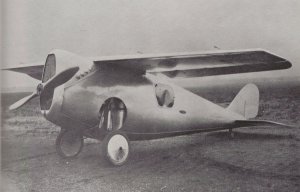
The Dayton-Wright RB features monocoque construction, retractable gear and adjustable wing camber—all in 1920. Image from Racing Planes and Air Races, A Complete History, Vol. I, Reference Series No. 1, by Reed Kinert, Aero Publishers, 1969. This and today’s other reference book are listed at both www.amazon.com and www.abebooks.com.
Profiting from having Orville Wright as a consultant, the Dayton-Wright was replete with features that were decades ahead of their time. Its landing gear retracted with a mechanism similar to that appearing on the World War II Grumman Wildcat. Its pilot sat enclosed in a monocoque fuselage fabricated of plywood covered with varnished linen. Its monoplane wings—more than strong enough to eliminate external bracing—had balsa cores covered with plywood and varnished linen.
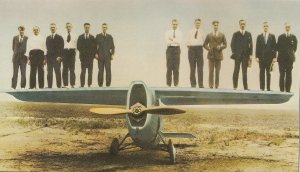
Few aircraft of the era could display such structural integrity. Image from The Air Racers: Aviation’s Golden Era 1909-1936, by Terry Gwynn-Jones, Foreward by Sir Thomas Sopwith CBE, Pelham Books, 1984.
The RB’s wings had adjustable camber, both at leading and trailing edge. Pilot Howard Rinehart had a sizable crank on the instrument panel that operated the camber change in concert with the landing gear.
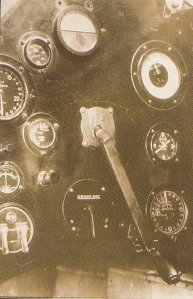
There was no forward vision, only instruments and a sizable crank for camber change and gear. Image from The Air Racers.
Celluloid side windows gave the only outward vision. These were hinged so that pilot Rinehart could lean out for a better look during landings.
The RB Racer had a water-cooled Hall-Scott inline-6 producing 250 hp. In testing, the aircraft exceeded 200 mph. However, its performance at the 1920 James Gordon Bennett Cup was less successful.
The competition was held that year at Etampe’s Ville-Sauvage Aerodrome, 37 miles south of Paris, on September 28. It consisted of time trials, each aircraft flying three laps of a 100-km (62-mile) course. Six aircraft qualified for the event, three French (two Nieuports and a SPAD), two American (the RB Racer and a U.S. Air Service Verville Scout) and a sole British entry (a Martinsyde).
Once Rinehart deemed conditions to his liking, he took off and warmed his RB Racer’s engine while he cranked up the gear and camber. Then he crossed the starting line at high speed.
However, as he came into view again at the end of the first lap, the RB’s camber was actuated and its wheels down. Rinehart landed with a failed left-side rudder cable. Some suggested darkly that the cable may have been doused in acid earlier in the day.
The only other monoplane, another American aircraft, suffered an even more ignoble failure: Testing at another site showed that the Curtiss-Cox Cactus Kitten required a longer landing distance than Ville-Sauvage Aerodrome provided. This monoplane got put back into its crate.
Presaging the Pomeroy adage, Sadi Lecointe’s Nieuport 29V—a traditional biplane fighter destined to flourish through the 1920s—won this last James Gordon Bennett Cup at 168.74 mph. ds
© Dennis Simanaitis, SimanaitisSays.com, 2013

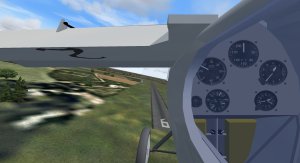
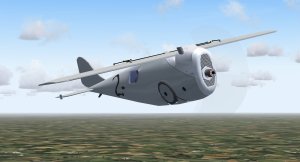
Pingback: the first of the many: – robert's space